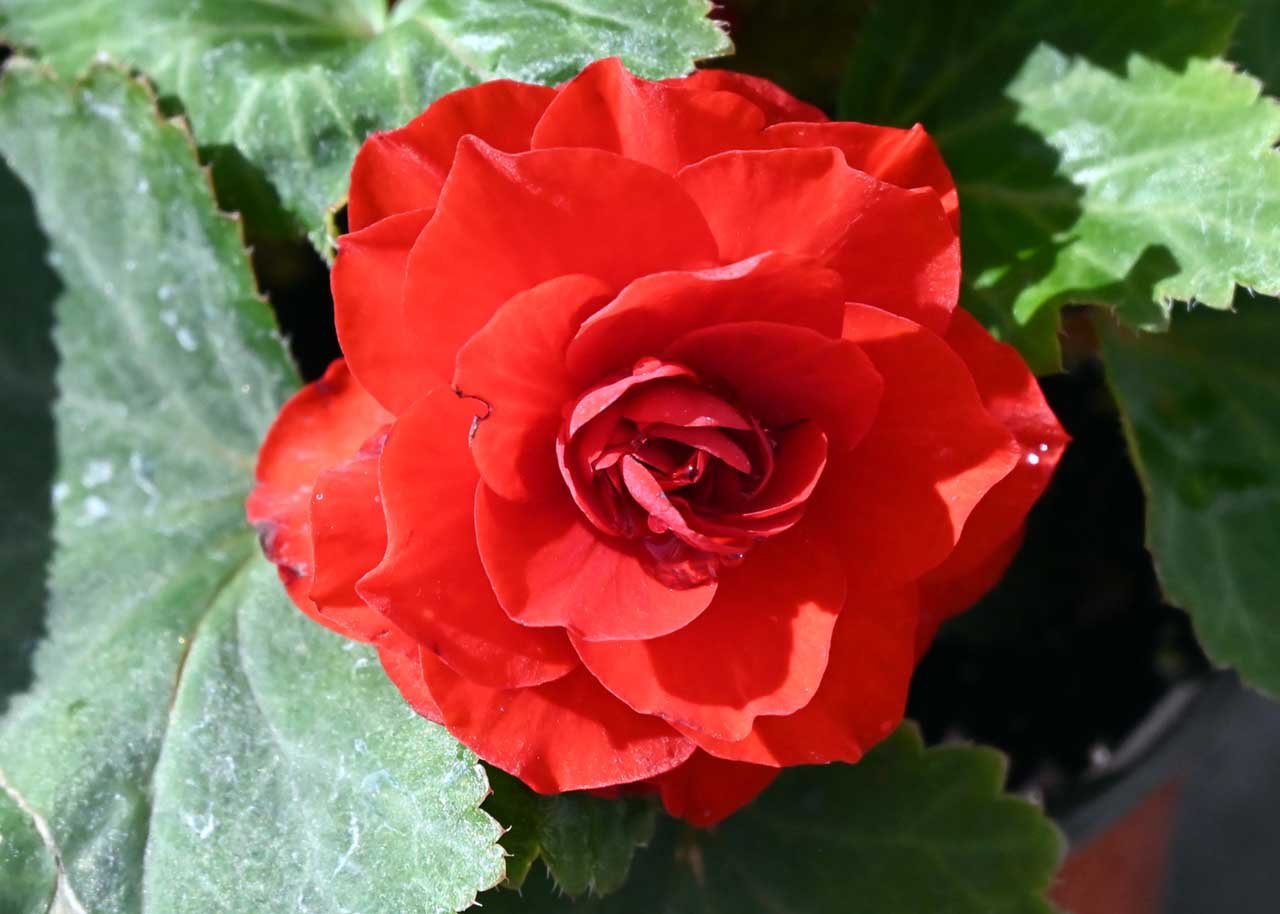Preventing Frost Damage To Tuberous Begonias

Brightly colored tuberous begonias are abundantly available in summer with gardeners hard-pressed to choose blooms between shades of orange, pink, yellow, white, and bi-colored.
Tuberous begonias thrive in bright shade with water only when the soil dries out completely. But they are not frost-loving plants and many don’t survive cold Oregon winters.
How To Care For Tuberous Begonias
As they hibernate in the winter months, begonias should be protected from frost if their owners want a new flush of color next season.
The tuberous variety should not be confused with the low-growing wax begonias known as annual bedding begonias that don’t benefit from winter protection whereas the tubers can be saved and replanted next spring.
Too much sun will burn tuberous begonias whereas too little results in leggy plants. They should be grown in bright shade and watered only after the soil has dried out.
Overwatering tuberous begonias is one of the most common ways of killing the plant as gardeners seem unaware that there is lots of water already stored in the tubers and stems. Check for moisture in the soil at least an inch in, not just on the top.
Getting the balance right is a little difficult as without water, tuberous begonias will shrivel and may die. They also don’t like potting soils that contain peat or sphagnum moss as these mediums hold a lot of water, but if they are in hanging baskets outside, tuberous begonias still need to be watered every day during hot weather.
Begonias will bloom larger and longer if they get regular fertilizer, making them heavy feeders but over-fed plants can get leggy and have weak stems.
Nicole Sanchez, Oregon State University Extension Service horticulturist recommends slow-release fertilizers for begonias as they are easier to apply and make it more difficult to over-fertilize.
Sanchez also stressed that color choice is important. There are a lot of choices including new salmon/orange varieties. In her experience, begonias with yellow blooms are always less vigorous than other colors.
Tuberous begonias can be either male or female flowers and- like the bird kingdom tends to be, male tuberous begonia flowers are the showier blooms. Sanchez recommends removing female flowers to redirect all the plant’s energy into producing showier male flowers.
Ways To Save Tuberous Begonias As Frost Approaches
As temperatures decline, tuberous begonias should be prepared and stored. Sanchez recommends the following to save potted tuberous begonia tubers:
- Remove the plant from the pot before hard frosts fall. Cut back most of the top of the plant, leaving the ball of roots and soil intact.
- Place the tuber in a dry, cool storage area such as a garage or basement and leave it to cure for several weeks.
- Once cured, soil can be shaken off the tubers, and any remaining stalks and roots removed to prevent rot which could spread to the tuber itself. Tubers should be placed on screen trays or packed in dry peat, sawdust, sand, or other insulating material.
- Begonia tubers should be stored in a dry, dark, cool area, above freezing point.
- Come spring, begonia tubers should be placed on damp potting soil in a warm environment and planted out into pots with rich, well-drained potting soil once roots and leaves have sprouted.
- As soon as all danger of frost is past, tuberous begonias can be taken outdoors and placed in a bright shady spot.
